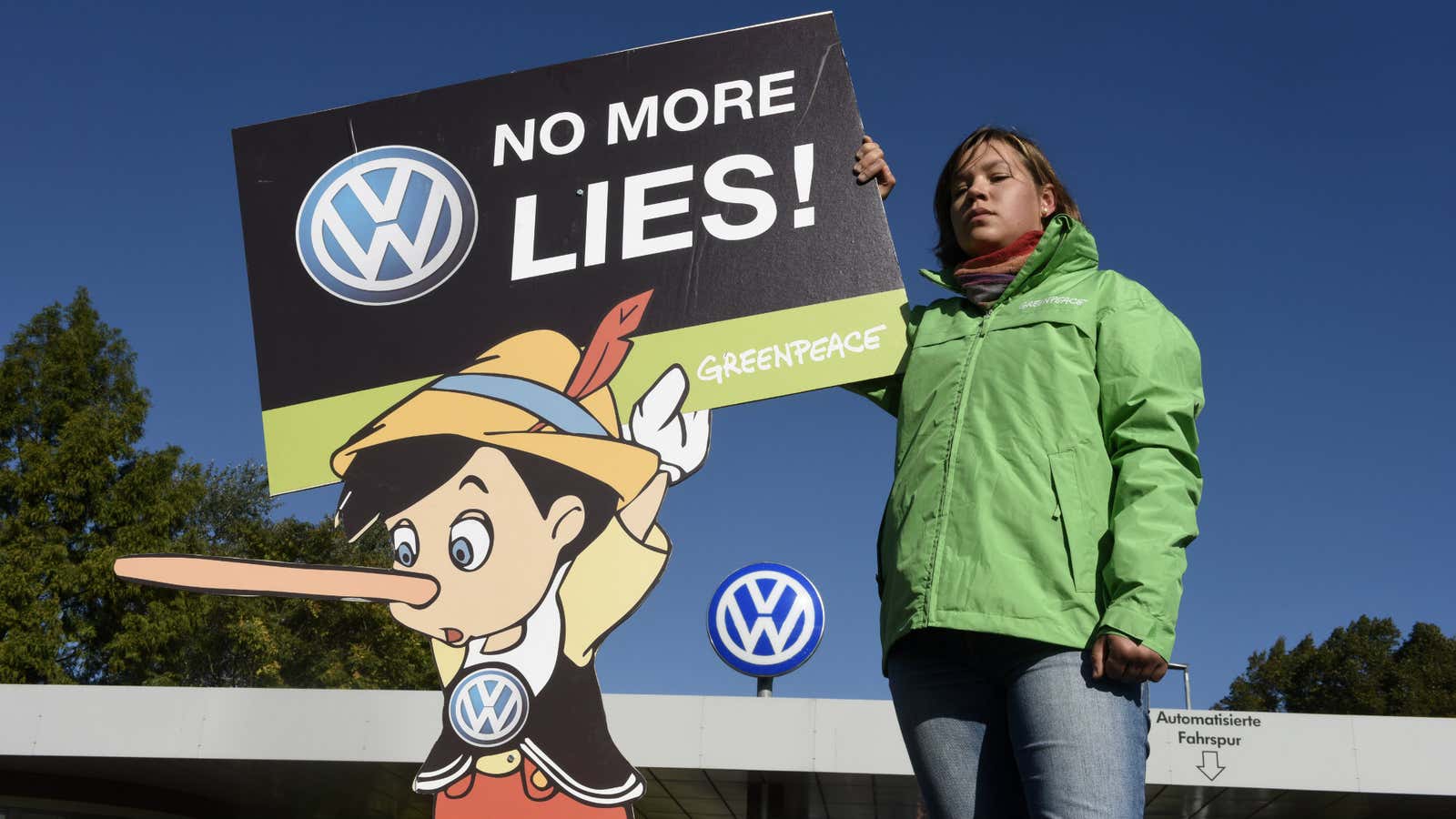It’s not just Volkswagen. For years, emissions from cars built by almost every major manufacturer have been higher out on the road than when tested in labs.
In fact, the average gap between real-world emissions and official test results has been growing. A new report by the International Council on Clean Transportation, the research group that first flagged suspicious emissions patterns at Volkswagen, found that under normal conditions the average carbon-dioxide emissions for passenger cars are some 40% higher than the official amounts certified by European lab tests. In 2001, the gap was less than 10%.
And Volkswagen doesn’t show the largest gaps. In German tests, cars from the Daimler stable (Mercedes-Benz and Smart) showed a gap of nearly 50% between what researchers measured on the road and what technicians recorded in official lab tests.
Researchers say that a gap of around 10% is to be expected under normal conditions. And the ever widening gap in recent years suspiciously coincides with the 2009 introduction of mandatory emission-reduction targets for car fleets in the EU. The difficulty of meeting these targets without sacrificing the desired handling and performance is apparent.
Extrapolating from German data, lab tests show that average EU auto emissions have fallen by 27% since 2001. In the real world, however, emissions are down by only 8% over the same period, and have shown little to no improvement over the past five years.
What gives? In Volkswagen’s case, the carmaker installed special software in some 11 million cars, explicitly designed to detect whether a car was being tested and reduce emissions accordingly. Using a “defeat device” in this way is illegal, and that’s why the company faces billions of dollars in fines, recall costs, and other penalties around the world.
But there are plenty of perfectly legal ways to make cars pass emissions tests in labs without restricting performance out in the real world. Unlike at Volkswagen, these techniques “strictly follow the letter of the legislation and are not concerned by its spirit,” according to the European Federation for Transport and Environment, a research group. It detailed many of these “cycle bypassing” techniques in a report released earlier this month.
In the EU, emissions tests will be conducted under more realistic conditions starting in 2017. There, and elsewhere, real-world testing now might be introduced sooner—previous lobbying efforts to extend existing testing loopholes look even worse in light of the Volkswagen scandal.
The artificial, and predictable, conditions under which cars are tested makes it easy for carmakers to engineer favorable emissions-test results without breaking any rules. Tuning engines to perform most efficiently at the power and load levels commonly used in tests is one way to do it.
Others include removing all potential friction by disconnecting the alternator and brakes, testing only the lightest models with bare-bones features, using specially designed lubricants, over-inflating tires, and taping over indentations, cracks, and grills to improve aerodynamics.
Suspicions are now turning to other carmakers, given that pretty much all of them show big gaps between how they’re rated in labs versus how they actually perform in the real world. Earlier this week, rumors forced BMW to issue a statement stressing that it “does not manipulate or rig any emissions tests.”
And indeed, it may be true that only Volkswagen was brazen enough to thwart tests in the way it did.
